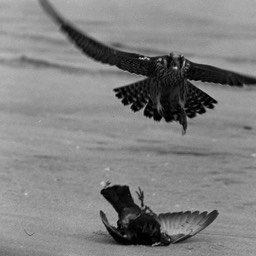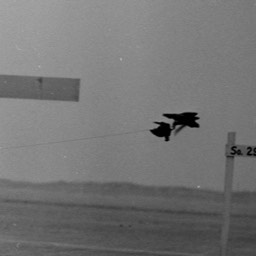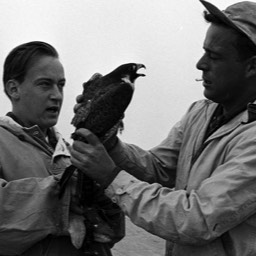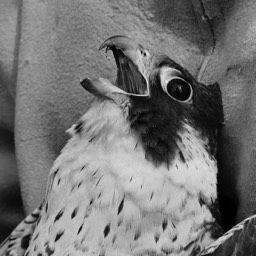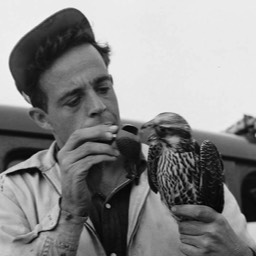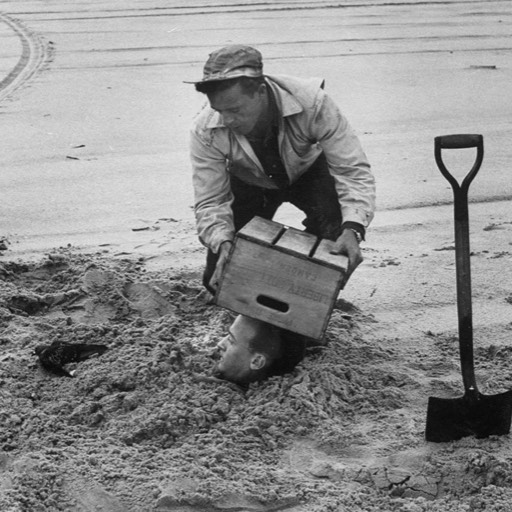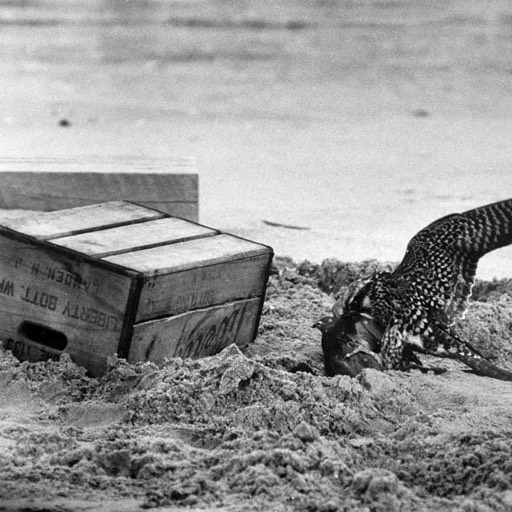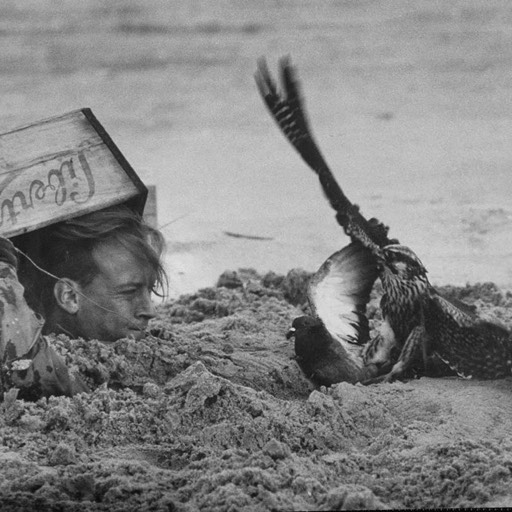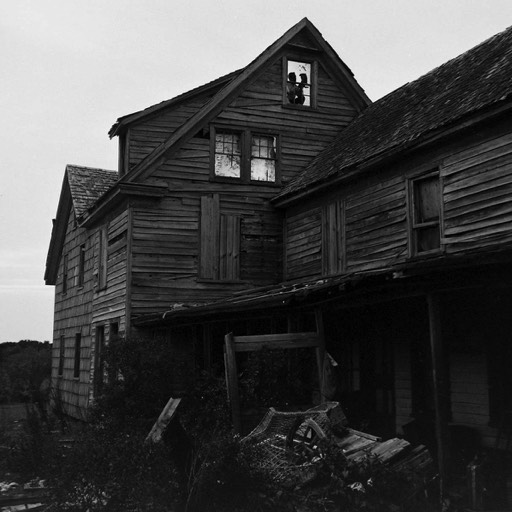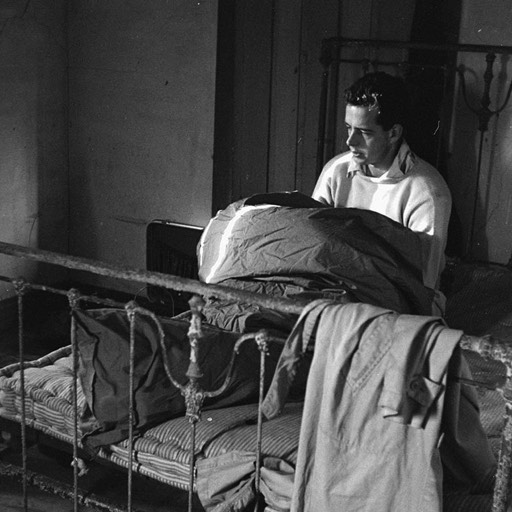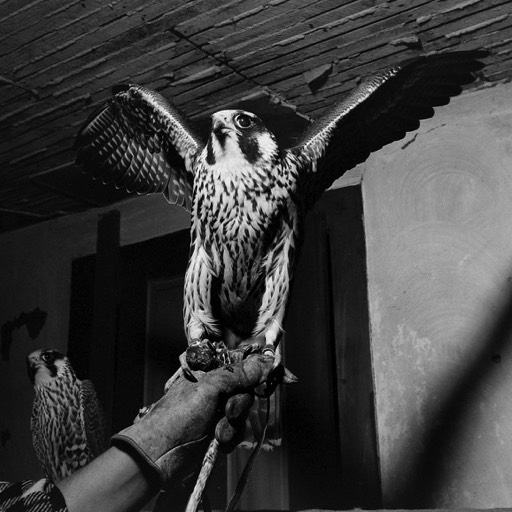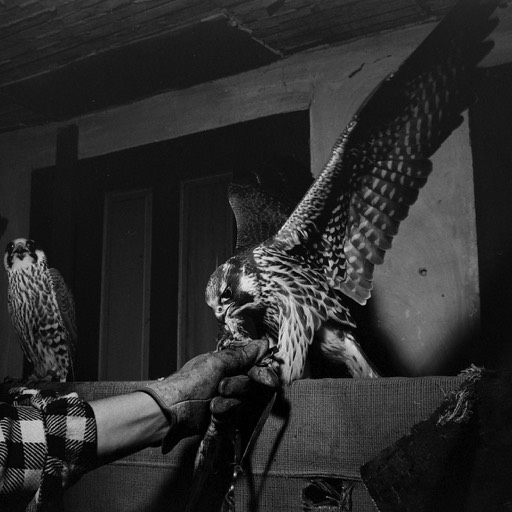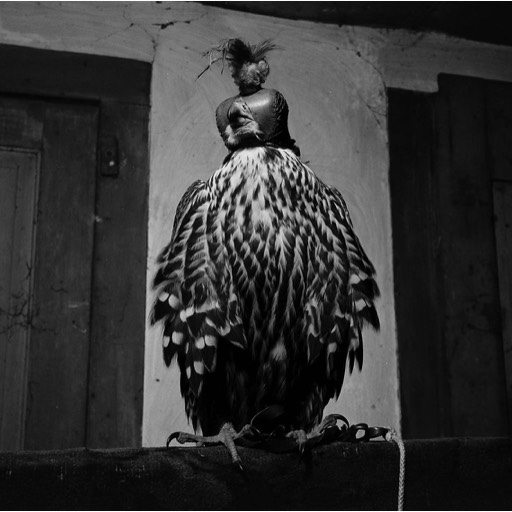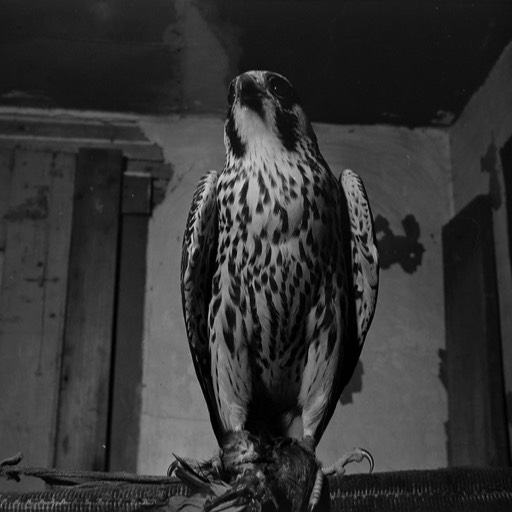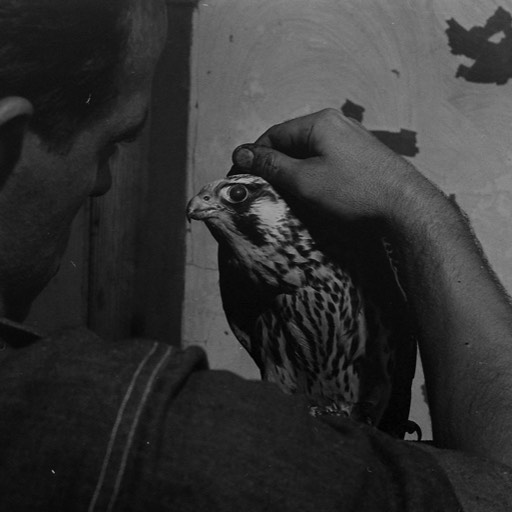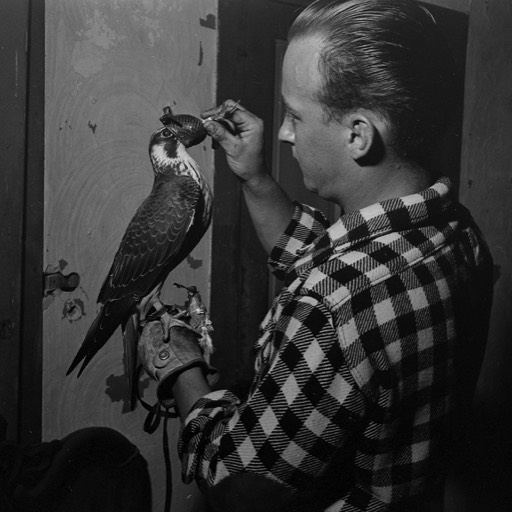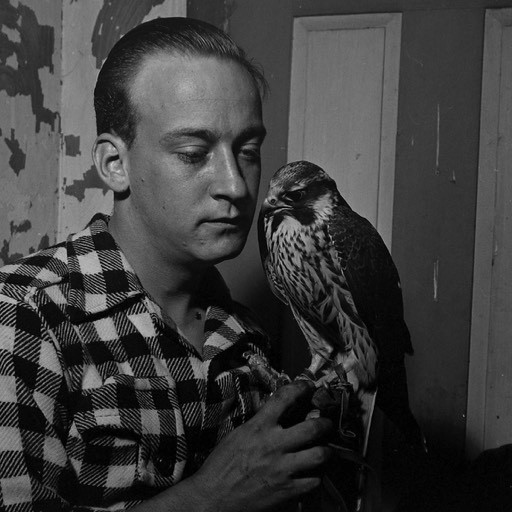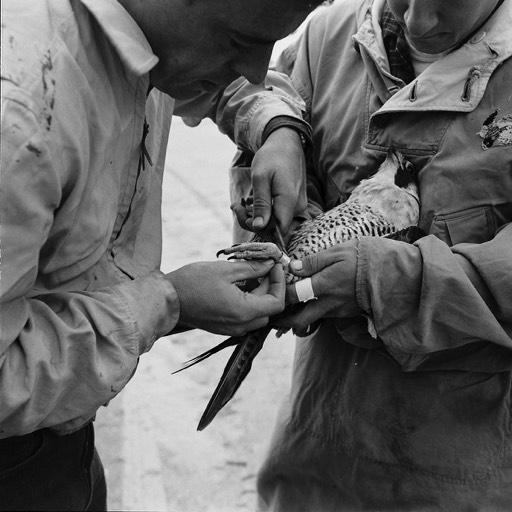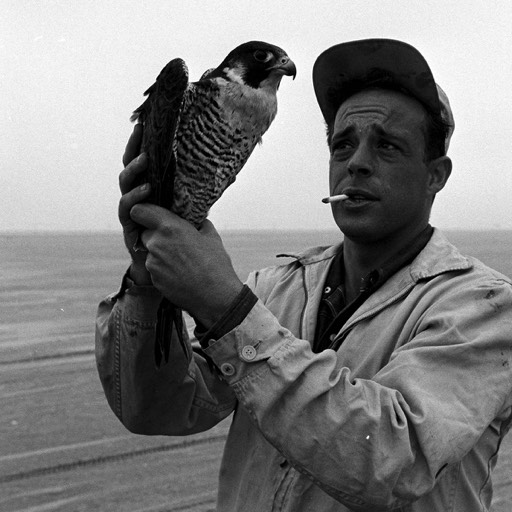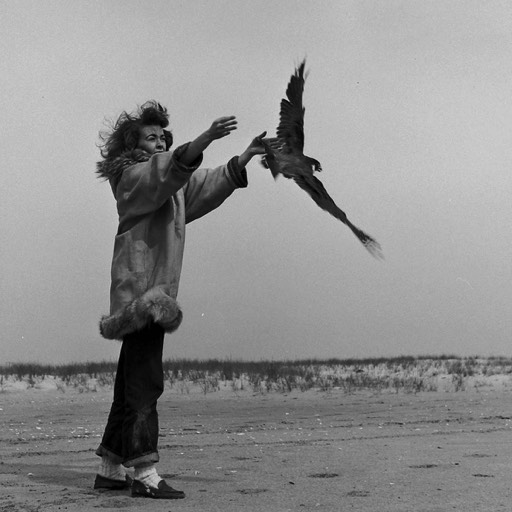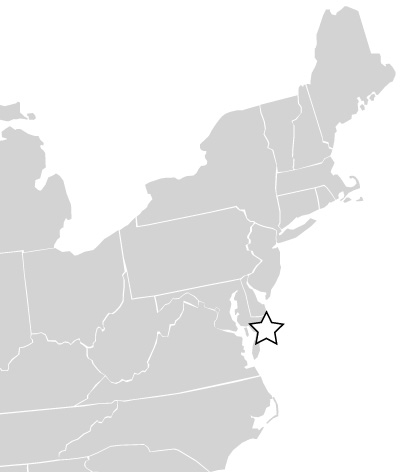
Assateague Island spans parts of the Virginia and Maryland coast.
When falconry first gained popularity in the U.S., many of the nuanced details of ancient trapping techniques remained out of reach in foreign language treatises. American falconers wanting to fly a peregrine had one option – use rudimentary gear to rappel into cliff eyries lining the rivers in northeast America.
In 1938, falconers Al Nye and Bill Turner learned of the southward passing migration of peregrines along the barrier beaches on the Atlantic coast. By the early 1940’s, the Craighead twins and Robert Widmeier returned from their respective trips to India with a treasure-trove of trapping knowledge.
Before long, a small corps of enthusiastic falconer-trappers began refining ancient techniques, either snaring birds with nooses on a pigeon-borne harness ("jacket") or by luring a bird into the hands of a companion buried in the sand. Americans were awakened to the potential of passage falcons. More than a revelation about peregrines, the moment signified a global re-birth of one of falconry’s most fundamental yet imperiled skill-sets: trapping, manning, and hawking a wild-taken bird of prey. From that moment, trapping wild raptors for falconry had a cultural foothold in the New World.
LIFE Magazine (1883 – 2000) was a popular general interest magazine especially known for the quality of its photography. During its golden age, LIFE produced a regular weekly series titled "Life Goes on a ..........." that included a brief photo-essay on an interesting subject. In the fall of 1952, LIFE editors assigned renowned photographer Peter Stackpole to "Life Goes on a Falcon Hunt" which then appeared in the 17 November issue (pp. 180-185). Stackpole traveled with Halter Cunningham and Brian McDonald, two grandfathers of North American falconry. Halter (1922 – 2005) was a long-time supporter, and board member of The Peregrine Fund. Brian (1927 – 2018) was a renowned craftsman of hoods and other falconry furnishings. Accompanying Halter and Brian were their (then) wives Barbara Cunningham and Anne McDonald.
Enjoy this selection of Stackpole’s images, most of which were not included in the original article.
Trapping
Stackpole documented two styles of trapping, the first was the noose jacket/harness. A leather jacket crafted for a pigeon with monofilament nooses was simple in theory, but in practice, aspiring beach trappers soon learned it required extreme attention to detail. The harness must fit just right to allow the pigeon some flight ability to attract a falcon. Furthermore, the nooses had to be tied and installed just right so they stood up, resisted laying down, were just the right size, slipped closed easily, yet were safe.
Dig in Trapping
The second style of trapping, the "dig-in" was more dramatic and it gave the article its subtitle, "An Old Crate and Two Pigeons are Used to Trap a Fierce Bird." In the beach setting surrounded by soft sand, a falconer, with the help of a companion, can quickly cover themselves in sand with some creative structure to conceal their head while still affording a view. They hold a pigeon by the feet, and subtly create movement in the pigeon, attracting the falcon, and then grasp the unsuspecting predator by the legs.
Success!
Manning and Training Start Right Away
Cunningham and McDonald only kept passagers, while haggards were banded and released. The manning and training work with their fresh passagers started right away. The falconers first unhooded their new charges alone in a dimly lit room, and manning and feeding sessions would continue into the night. The Falco peregrinus trundrius, or “tundra peregrine”, often proved notably calm and willing to accept a human relationship.
The Next Morning: Releasing the Haggards
Cunningham and McDonnald, like falconer/bander Jim Rice after them, would frequently trade passagers they had caught for haggards caught by other trapping parties, so they could band and release them. For many years, the number of haggards taken off Assateague was minimal, not only to help preserve the breeders but because the more amenable passagers were so available. This early capture and banding work formed the foundation for landmark peregrine monitoring projects.
The Legacy of Assateague
Assateague Island has played a central role in North American falconry for decades. With the techniques refined on Assateague, U.S. falconers discovered more beach migration hotspots like Padre Island in Texas. American falconers rediscovered the art of trapping, and in doing so, helped preserve trapping as a legal falconry endeavor in the U.S., and revive a core skill just before it fell into obscurity throughout Eurasia.
After this early era on Assateague, peregrines began a steep decline. The peregrine was added to the Endangered Species Act list, and DDT was eventually banned. The founders of The Peregrine Fund began implementing their landmark recovery project – an initiative largely inspired by their experiences trapping and flying passage peregrines from places like Assateague. Following the recovery of the peregrine, falconers have since returned to the beaches, and this rich heritage continues today.
Learn More
You can read about Halter Cunningham and Brian McDonald in their memorial entries from our Book of Remembrance. You can also see examples of Brian McDonald’s craftsmanship in our American Hood exhibit. (You’ll find Brian’s work in Section 3 among other innovators from the 1950's and 60’s.) Peter Stackpole is remembered for his prestigious career over at Life Magazine.
Do you have a story from Assateague?
We know that Assateage has been an exciting and inspirational place for many falconers over the years. We would love to share some of your experiences here. Please send your stories to [email protected].
All Images by Peter Stackpole © Time Inc. All rights reserved. Used with permission.
Exhibit Curators
Kent Carnie, Curator Emeritus, The Archives of Falconry
John M. Goodell, Executive Director / Curator, The Archives of Falconry
Exhibit Designer and Multimedia Producer
Marc Dantzker, RangeWide Productions











